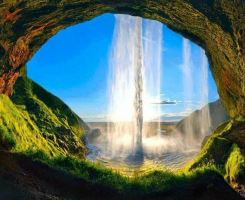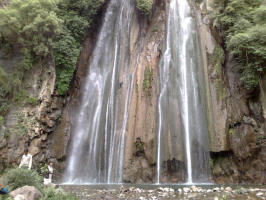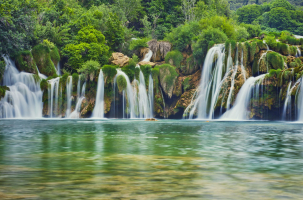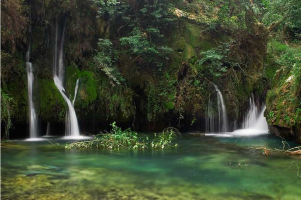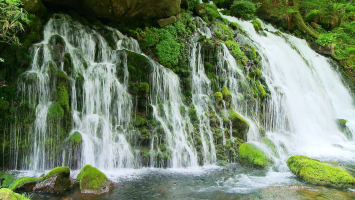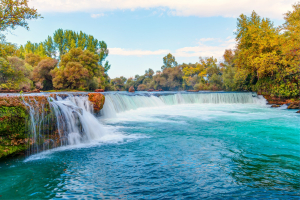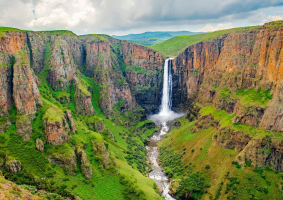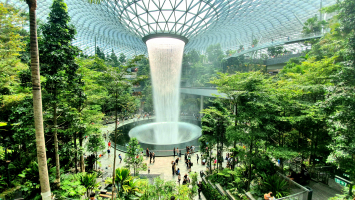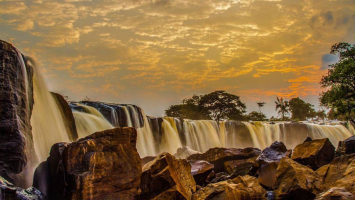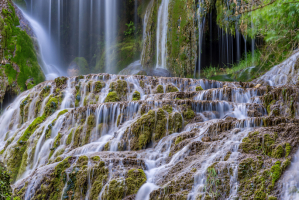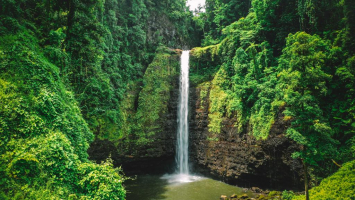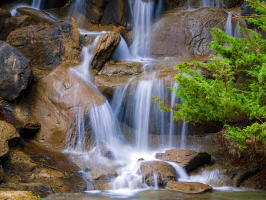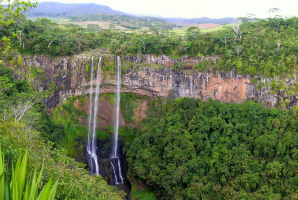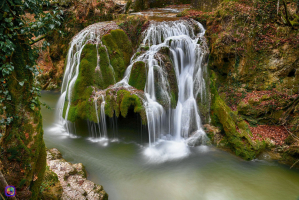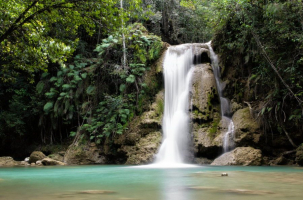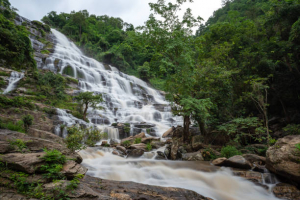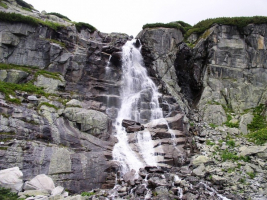Top 10 Most Beautiful Waterfalls in China
China is a country with many beautiful landscapes, especially waterfalls. It is an ideal destination for domestic and foreign tourists. Let's discover the most ... read more...beautiful waterfalls in China!
-
Gudong Waterfall is situated in Lingchuan County, to the south of Daxu Ancient Town. Guilin city is 25 kilometers away. There are 13 cascades in the waterfall. It is 20 meters wide on average, with a drop of 90 meters. Some iron chains were stalled on either side of the waterfall out of caution for the many tourists who will come and play there.
Gudong Waterfall Tourist Area has a 96% forest covering rate. It extends over an area larger than two kilometers square. A total of 1.3 square kilometers are covered by the virgin forest. There is also another woodland nearby that is home to maple trees. Every year, near the end of November, the maple leaves will have an autumnal crimson tint. The forest turns into a reddish planet. There are no such sights in other parts of Guangxi Province. When visiting the Gudong waterfall in the fall, tourists can take advantage of the fresh air and exercise while also seeing the lovely scene of maple trees.
The promotion of environmental conservation is the Gudong waterfall Tourist Area's key characteristic. Visitors are intentionally reminded of the value of environmental protection by signs and other features. Gudong Waterfall offers visitors the chance to get up up and personal with nature while also picking up some helpful information about environmental preservation.
Location: Guangxi, China
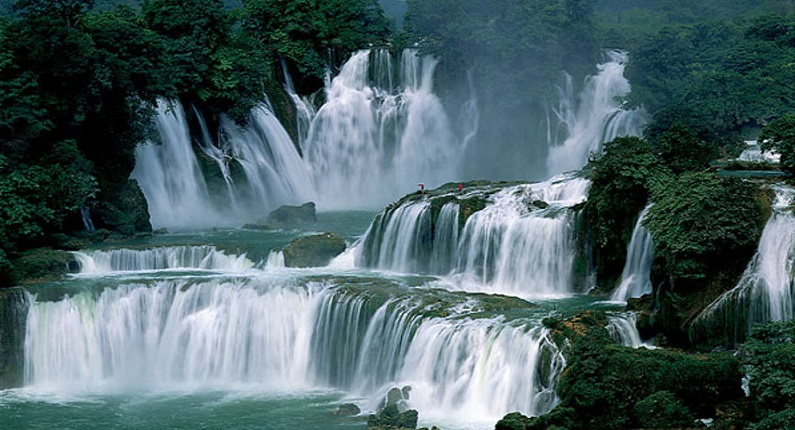
Photo: chinatoursnet.com 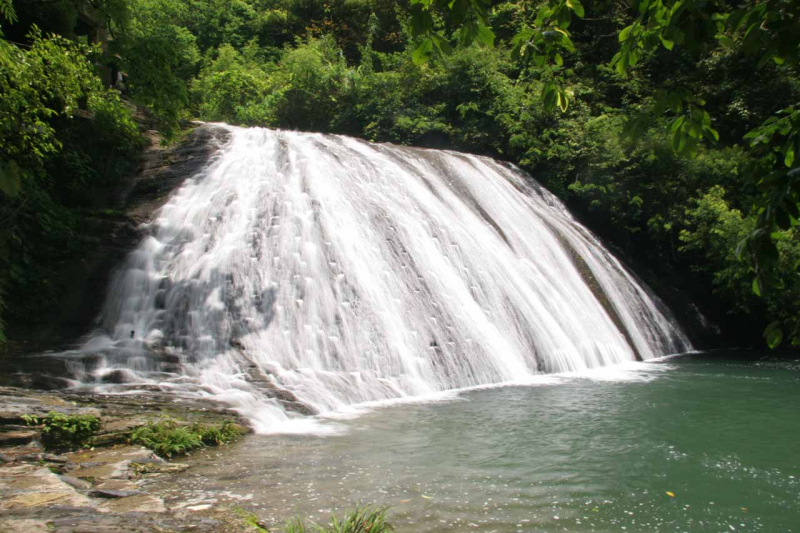
Photo: world-of-waterfalls.com -
The Shuzheng Waterfall (Shuzheng Pubu) in Muni Valley (Munigou Park) descends into a lovely valley between the Tiger and Wolong Lakes. The Park is a portion of a beautiful region in China's Sichuan Province. The Shuzheng Waterfall has a 62-meter width and a 15-meter drop. Although it might not appear to be very big, it is regarded as one of the most vicious and loud ones. It is compared to the biggest roar of a tiger or lion, and it reverberates across the entire valley. The water in the Tiger Lake below splashes all over as a result of the waterfall's velocity. Smaller pools that have developed throughout time in the area have added to the breathtaking environment.
It's possible that this waterfall isn't as large as its well-known rivals, like the Nuorilang Waterfall (also located in Jiuzhaigou Nature Reserve). But it's one of China's most picturesque waterfalls because of its beauty and distinction. Even though it is the smallest waterfall in the nature reserve, first-time visitors are often amazed by how beautiful it is. Fortunately, Shuzheng waterfall is the first fall visitors to the valley will see. Shuzheng Waterfall is one of the most beautiful waterfalls in China.
Location: Sichuan, China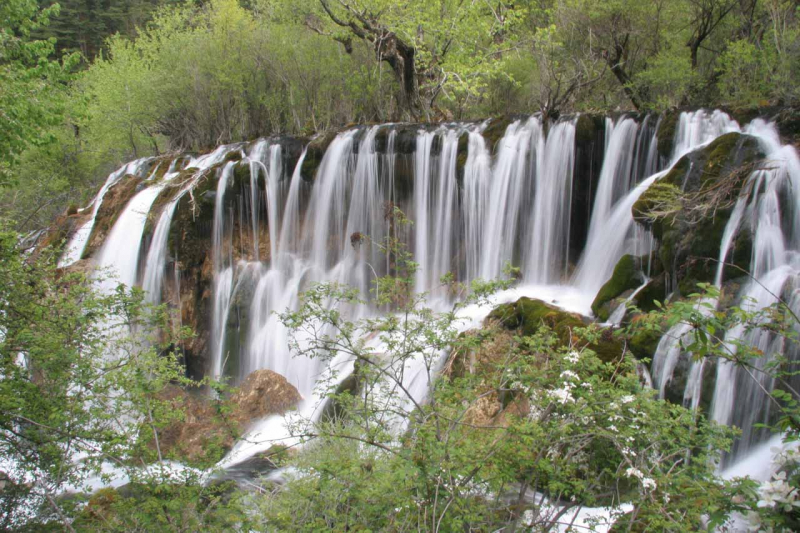
Photo: world-of-waterfalls.com 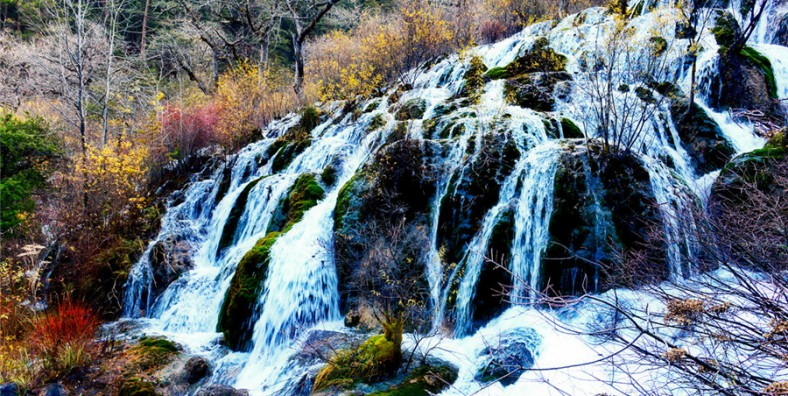
Photo: chinadragontours.com -
The Hukou Waterfall is the largest yellow waterfall in the world. It is also the largest waterfall on the Yellow River. It is situated where the middle reaches of the Yellow River flow through Jinxia Grand Canyon at the confluence of the provinces of Shanxi and Shaanxi, 165 kilometers to the west of Fenxi County and 50 kilometers to the east of Yichuan County.
The Qilangwo Bridge, which links the provinces of Shanxi and Shaanxi, is located below the waterfall. When the sun is shining, the mist is bent by the light, forming a rainbow that spans the lake like a vibrant bridge. Hukou Waterfall was recognized as one of the "40 Best" national scenic locations in 1991. Visitors are treated to a spectacular waterfall created by river flows flowing into Hukou Village, which is a sight not to be missed. The falls can be accessed from either side as they pass through the Shanxi-Shaanxi Grand Canyon. The benefit of traveling from Shanxi is the chance to see additional sights along the gorgeous Yellow River, in addition to the magnificent Hukou Waterfall, such as the Dragon Cave.
When visiting this stunning waterfall from the Shaanxi side, tourists have the opportunity to take in the Drum Fight, a well-liked spectacle that combines Kungfu, dancing, and percussion music. The largest and most famous yellow waterfall in China offers fantastic possibilities to take in nature at its most breathtaking.
Location: intersection of the provinces of Shanxi and Shaanxi
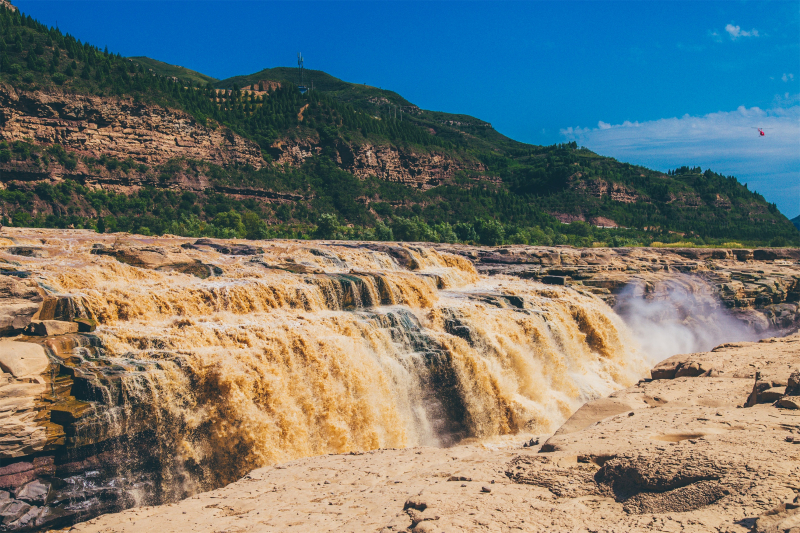
Photo: trip.com Video: CGTN -
One of the biggest waterfalls in China and East Asia, the Huangguoshu Waterfall is situated on the Baishui River in Anshun, Guizhou province. It is 101 m broad and 77.8 m high. The main waterfall is 83.3 meters broad and 67 meters high.
The area, also known as the Huangguoshu Waterfall National Park, is located 45 kilometers from Anshun City. The China National Tourism Administration has designated the waterfall's attractions, together with nearby smaller waterfalls, as a AAAAA scenic region.
The vantage point of Huangguoshu Waterfall varies depending on where the viewer is. Waterfall-Viewing Pavilion (Guan Bao ting), where the waterfall can be seen from a distance, is one viewing location. Another is the Water-Viewing Stage (Guan Bao Ting), which offers a bird's-eye view of the cascade. The third is the Waterfall-Viewing Stage (Guan Bao Tai), where visitors can look out to the scene while raising their heads. It is ideal to experience the falls' roaring sound when the water is flowing most vigorously. The spectacular natural beauty of this location, which lies on the left side of the cliff with gorgeous, lush grassland to the right, is unmatched.
Location: Anshun, Guizhou, China
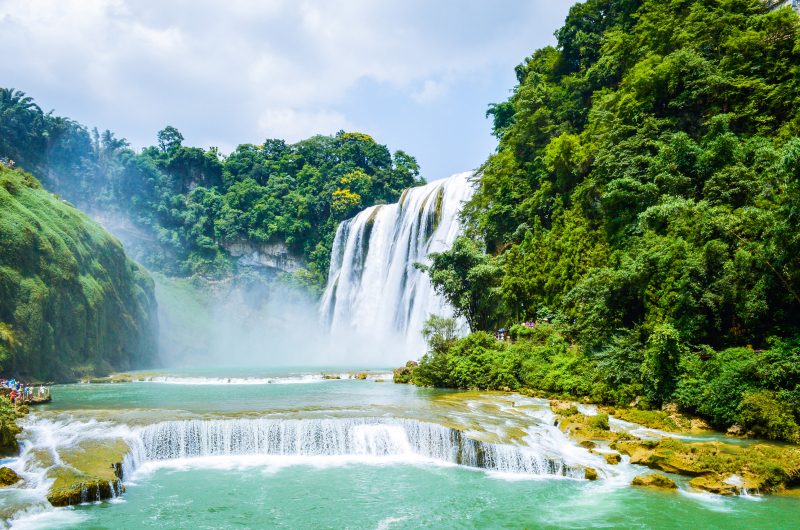
Photo: trip.com Video: CCTV Video News Agency -
Nuorilang Waterfall, also spelled as Norilang Waterfall, is a waterfall located in the middle of Jiuzhaigou, Sichuan Province, 2365 meters in elevation, 320 meters wide and 24.5 meters high. It is one of the large calcified waterfalls in China. This is one of the most beautiful waterfalls in China.
This waterfall, one of China's most beautiful falls, is situated at the confluence of three valleys and is a fantastic place to explore. The people claim that the fall is a manifestation of the presence of a powerful god because the word "nuorilang" means "God". The viewing platform built in front of the fall provides breathtaking scenery and fantastic photo opportunities. The Jiuzhaigou's service area has a buffet that is available to travelers at all times.
Springtime marks the beginning of Nuorilang Waterfall's lengthy, sound slumber. With increasing vigor and energy, the streams and water dribble on the cliffs and rocks. The falls increase in size. The autumn season, when Jiuzhaigou National Park is vibrant with color and resembles a massive oil painting, is when Nuorilang Waterfall is at its best. The waterfall is particularly stunning because of the autumnal leaves and the vibrant flora.
Location: Jiuzhaigou, Sichuan Province
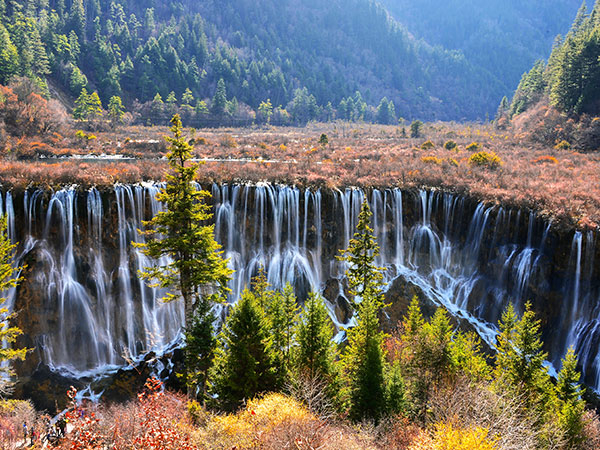
Photo: topchinatravel.com Video: Aleš Krejčí -
The Jiulong Waterfall, also known as the Nine-Dragon Waterfalls, is composed of 10 cascades that each have a pool beneath them. The distinctive waterfalls in Yunnan are generated by the unique geology structure of the region as well as river erosion over thousands of years. There are a total of 10 levels in this set of waterfalls, which was given the name Jiulong Waterfall after the Jiulong River. The adage "Nine dragons and Ten Waterfalls is the No. 1 wonder in the south Kingdom" is therefore debunked.
It is situated 20 kilometers from the Chinese town of Luoping County in a valley that is 4 kilometers long and 200 meters deep. The group's tallest waterfall, the thundering Number 1, measures 110 meters in width and 56 meters in height. Although they are not as high as Fall Number 1, succeeding falls differ from one another in height and width, and each one has its own unique appeal. One can see all ten cascades at once while seated on the belvedere.The cascade transforms into a silver chain that hangs from the sky and shoots spray into the air in the winter and spring. On bright days, rainbows may be seen rising over the waterfall. The waterfalls are located in a beautiful setting and are audible from a great distance away. The towering cascades reward visitors with breathtaking vistas.
Location: Luoping, Qujing, Yunnan, China
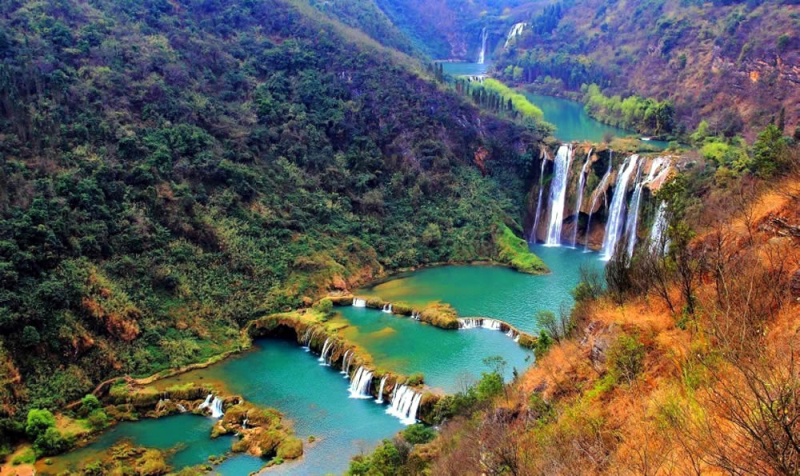
Photo: sworld.co.uk 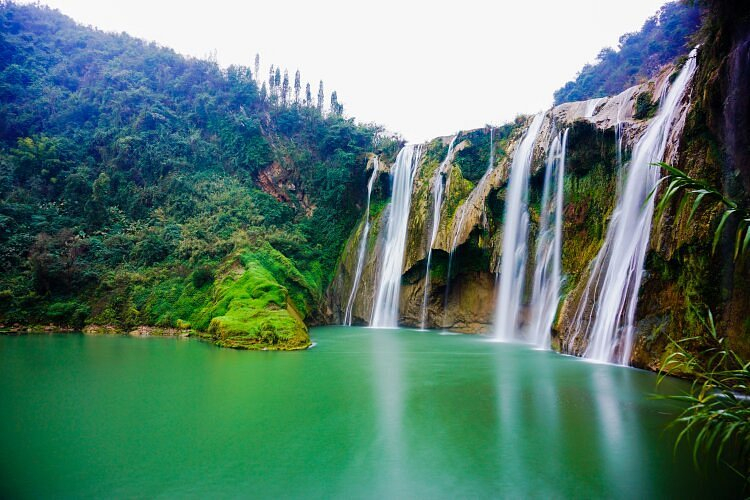
Photo: tripadvisor -
The set of waterfalls along the border between China and Vietnam is so stunning that it is recognized as one of the most stunning waterfalls in the entire globe. It consists of the Ban Gioc Waterfall on the Vietnamese side and the Detian Waterfall on the Chinese side. Detian Waterfall is quite awe-inspiring and draws more visitors. The Detian Waterfall is the largest transnational waterfall in Asia and the fourth largest in the world, with a total drop of three levels and over 70 meters. It displays a typical Asian scene with rocky outcrops rising above verdant rice fields.
There is a picturesque shuttle that departs from the waterfall entrance. Along the trip, the sound of water rushing in the distance sounds similar to thunder. You will surely feel a mixture of excitement and astonishment as you approach closer to it. The falls plunge into a deep pool of turquoise water. Ascending the stairs will bring you to the viewing platform, where you can get a close-up look at the enormous falls thundering down with machismo.
Location: Daxin County, Congzuo City, Guangxi Zhuang Autonomous Region
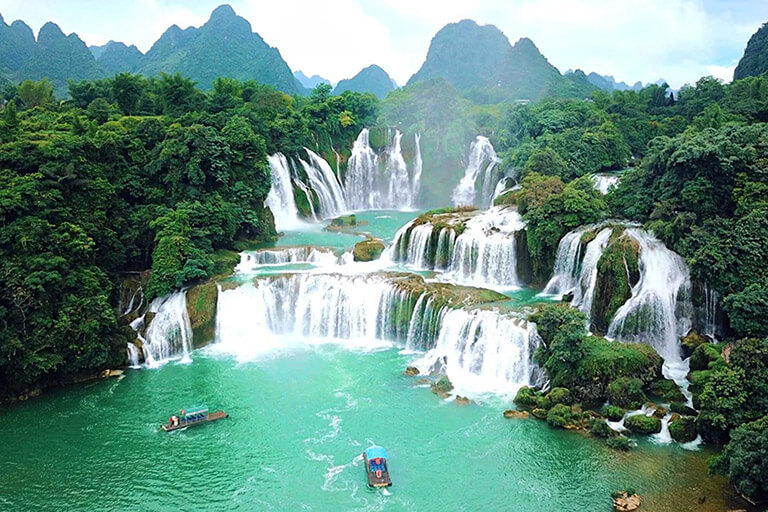
Photo: chinadiscovery.com 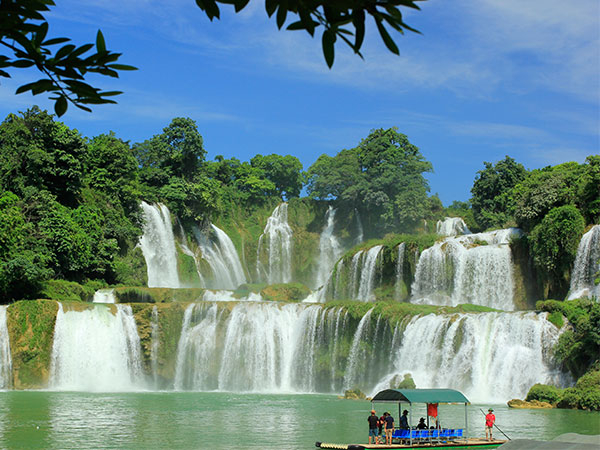
Photo: topchinatravel.com -
The Tsangpo Badong Waterfalls, which is situated at the base of Xixingla Mountain, consists of two large waterfalls, Tsangpo Badong Waterfall I (33 meters high), and Tsangpo Badong Waterfall II (35 meters high), as well as a number of smaller ones. Currently, the largest waterfall in the River Channel is the Tsangpo Badong Waterfall II. On October 11th, 1998, the Yarlung Tsangpo Grand Canyan Scientific Expedition made the initial discovery of the waterfalls. The unique natural wonder formed in the gorges is the Tsangpo Badong Waterfalls Group. Scientists contend that the gorge's narrowness and shape are a result of changes to the rocks and division of the rivers. The waterfall is a way to let energy out.
There are no words that can adequately describe the Tsangpo Badong Waterfalls other than "powers." The choppy waters blend sharply as they surge into the little gorges. The waterfalls are much thicker than they are wide. It is conceivable that anything thrown into the waterfall will burn up.
Regular tourists are not advised to visit the Tsangpo Badong Waterfalls due to poor road conditions and a lack of tourist amenities. Tsangpo Badong Waterfall has only been visited by a small number of scientists, explorers, and photographers thus far, and the majority of them did so during the dry season.
Location: Tsangpo Grand Gorge, Tibet, China
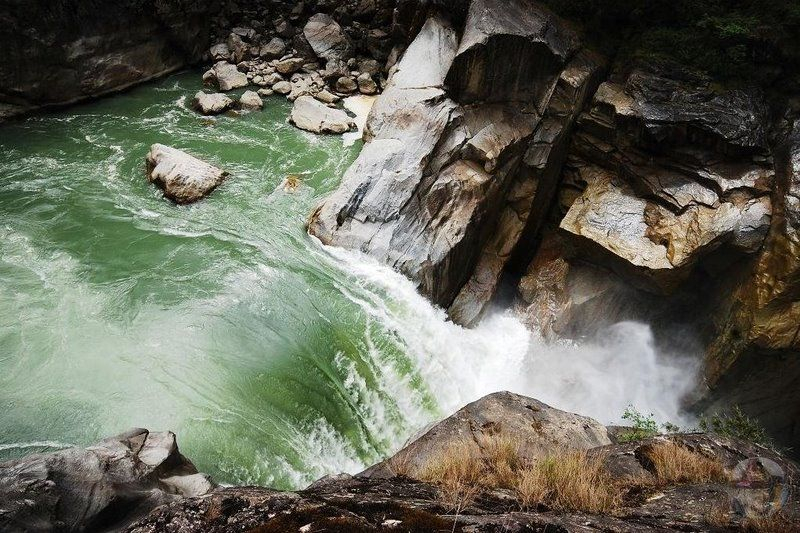
Photo: pinterest 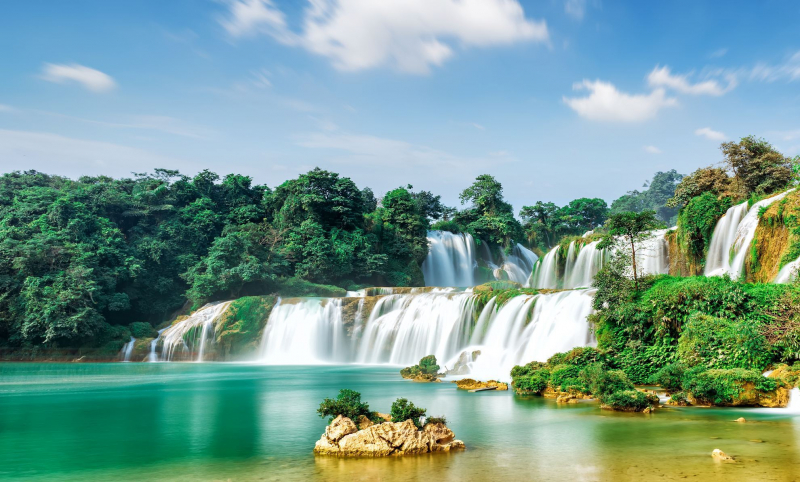
Photo: trip.com -
A 68-meter waterfall located in China's Changbai Mountain Range is called the Changbai Waterfall.
Changbai Waterfall is 68 meters high. The greatest waterfall to emerge from a crater lake is this one. The summer snowmelt season from Lake Tianchi, sometimes known as "Heaven Lake," is when it is most dramatic. Until late June or early July, Tianchi Lake is normally frozen solid. Since the lake drains from a depth below the ice and the water is geothermally heated beneath the ice all year long, flow over the waterfall is limited during the winter months yet it never totally freezes over. In close proximity, the alpine Lake Tianchi is cut through by the modern China-North Korea boundary.
Visitors who approach Changbai Waterfall will hear a loud roar as the water drops an astonishing 68 meters from the peak of the waterfall (223 feet). There are two well-liked routes for visitors to see the waterfall. First, there is the simpler, more developed western path, where crowding is to be expected. The other choice is for visitors to climb Heifengkou on the main summit, which is more difficult but offers the best overall view of the cascade.
Location: Yanbian, Jilin, China
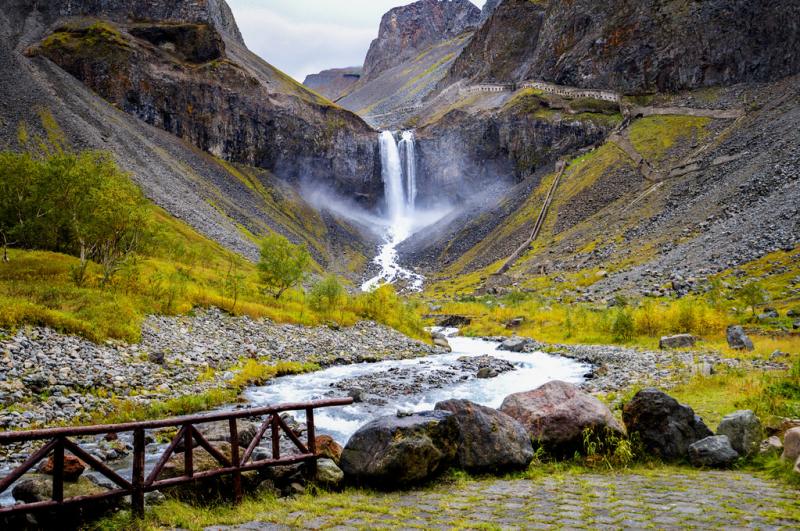
Photo: Flickr 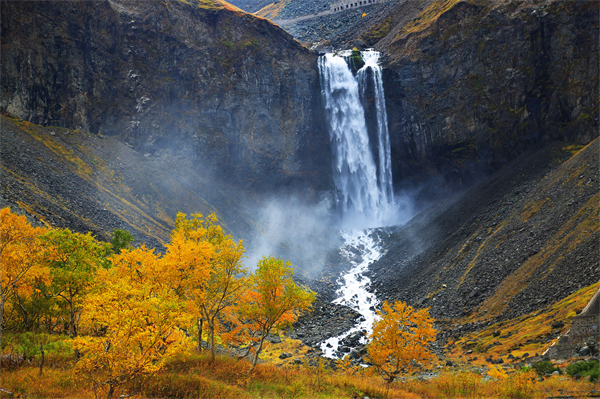
Photo: gojilin.gov.cn -
Pearl Shoal Waterfall may be found in Jiuzhaigou, Aba-Ngawa Tibetan, and Qiang Autonomous Prefecture, in the country of China's northern Sichuan Province. The waterfall is located on one of the Bailong River's tributaries. The crest of the waterfall, which is 2,433 meters above sea level, is 162.5 meters wide. The drop is 40 meters.
If you enjoy visiting waterfalls for their calming effects, you should consider going to Pearl Shoal Waterfall. The name Pearl Shoal Waterfall refers to the gorgeous pearl-like appearance that sunlight reflection gave the shoal. In addition to the waterfall itself, there are plenty of China firs and pine trees, and in the middle of the summer, the shoal's cool water makes it a pleasant place to visit.
Calcium carbonate, among other minerals, is abundantly deposited in the water that flows over the structure. The central portion of the falls themselves can actually support small trees and plants due to the strength of the mineral buildup. This is one of the most beautiful waterfalls in China.
Location: northern Sichuan Province, China
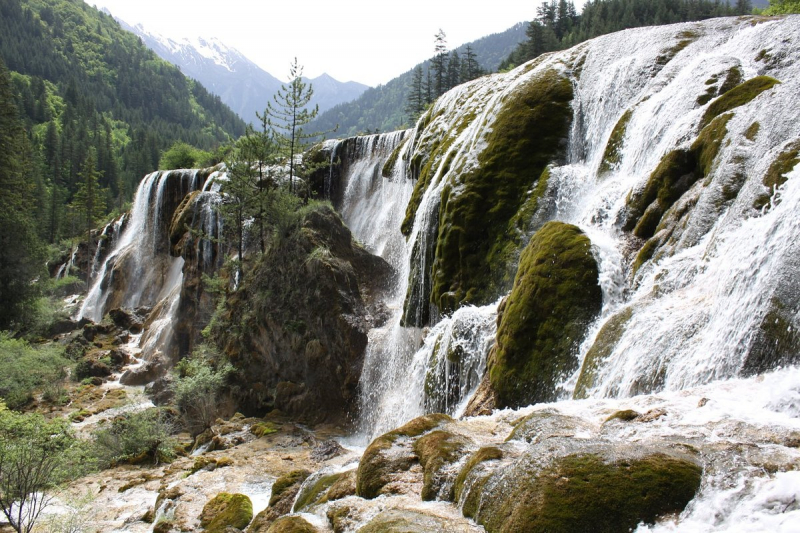
Photo: tripadvisor 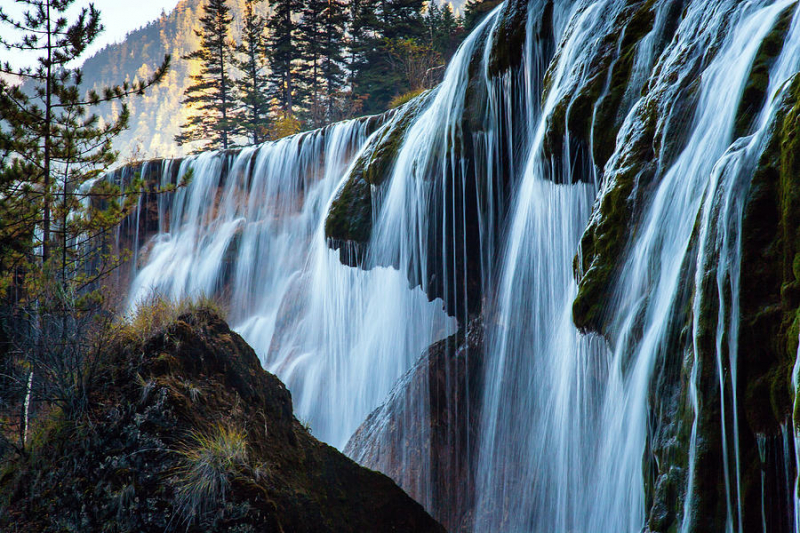
Photo: photos.com












